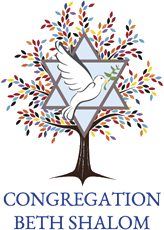A couple of years ago I attended a Catholic wedding, a Catholic funeral and Mass, all in a very short period of time. I noticed that as part of the Mass, the Priest read from the Gospels and also read from other Church scripture. Each Shabbat we read from the Torah and the Haftarah, which comes from either the prophets or the writings.
While attending the funeral, I remembered that when someone is near death, the Church performs last rites. We have the same thing – it is called V’dui. And while many Jews are not aware of its existence, a substantial part of the Yom Kippur service is called V’dui, when we confess that we have not always lived up to our most noble selves.
This week’s Shabbat marks Congregation Beth Shalom’s first Confirmation, another life cycle event with mixed origins. Traditional Judaism had the Bar Mitzvah to mark the coming of age of a Jewish boy, who could, at age 13, fulfill certain ritual roles as well as some legal functions. At the same time, Traditional Judaism had for girls . . . well . . . nothing.
Early Reform Judaism had moved away from Bar Mitzvah, feeling that a 13-year old was not mature enough to assume such meaningful responsibilities. As a result, in the 1800s Reform Judaism offered Confirmation as a way to keep our students in class longer. As an unintended benefit, it became a life cycle for girls, as well.
The leaders of the Reform Jewish community, as well as many in the Conservative Movement, were concerned that without some type of continuing education, we would have a mass exodus from the temple as soon as the student became “Bar Mitzvah’ed”.
The exodus was massive and is still going on today.
Confirmation was embraced as a way to extend our children’s education, at least for a year or two. But one troubling question remained: If we have our students for two more years, what do we do with them?
Initially, we followed two paths – both leading nowhere.
Mistake #1 – Make Confirmation like two more years of Religious School. Given that students were fleeing Religious School like the plague, that solution made absolutely no sense.
Mistake #2 – Focus on Social Justice issues. However, Social Justice is part and parcel of Judaism right from the start. Waiting to start to teach about Judaism’s call for justice until the students are 14 years old is way too late. In addition, as important as environmentalism, proper treatment of parents and family, and political issues are, there is nothing intrinsically Jewish about them.
We were looking outside of Judaism for an answer that was right in front of us. Judaism teaches that 5% of the people do good, and another 5% do evil. Ninety percent do nothing. We must not be among the 90%.
That is the Jewish basis for Confirmation – to transition from pediatric Judaism, where your parents can take on your sins, to adult Judaism, where you must take action yourself and, hopefully, act correctly. It is incumbent upon us to teach our children that they must not be among the 90% who do nothing. Such is the lesson of Confirmation, and that is why Confirmation may just be the most important of all Jewish life cycle events.
B’Shalom
Rabbi Stanley Halpern
